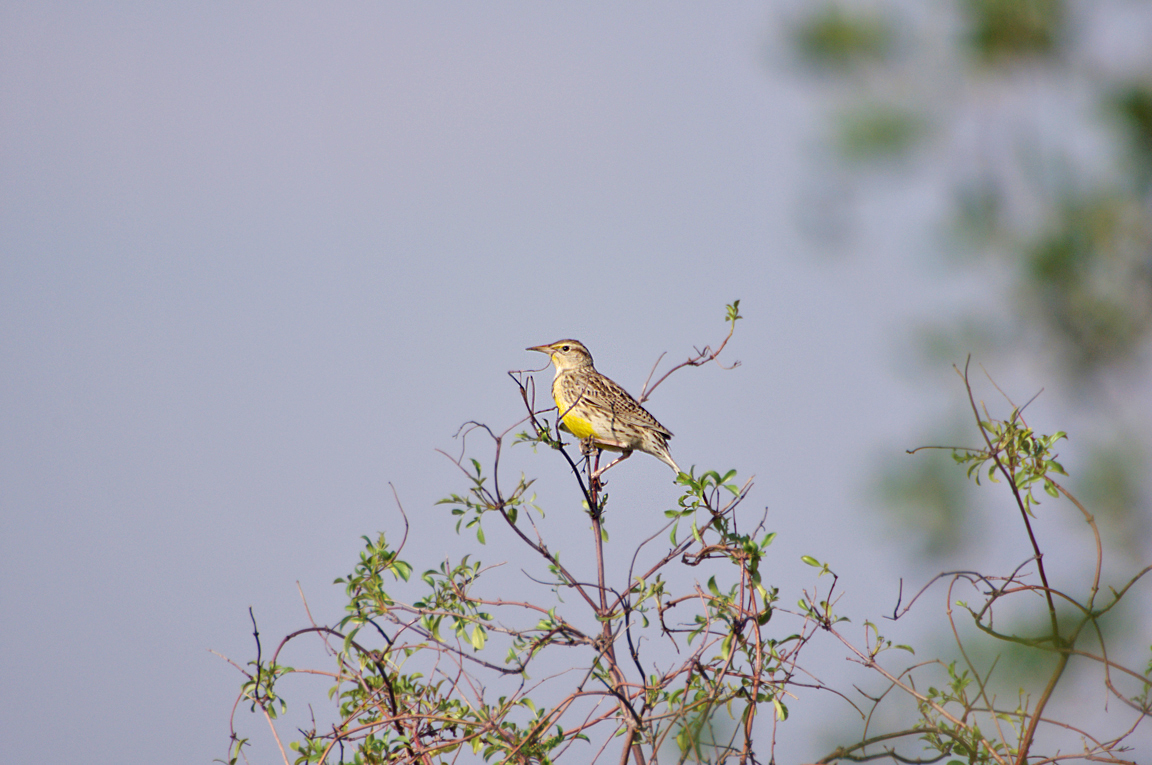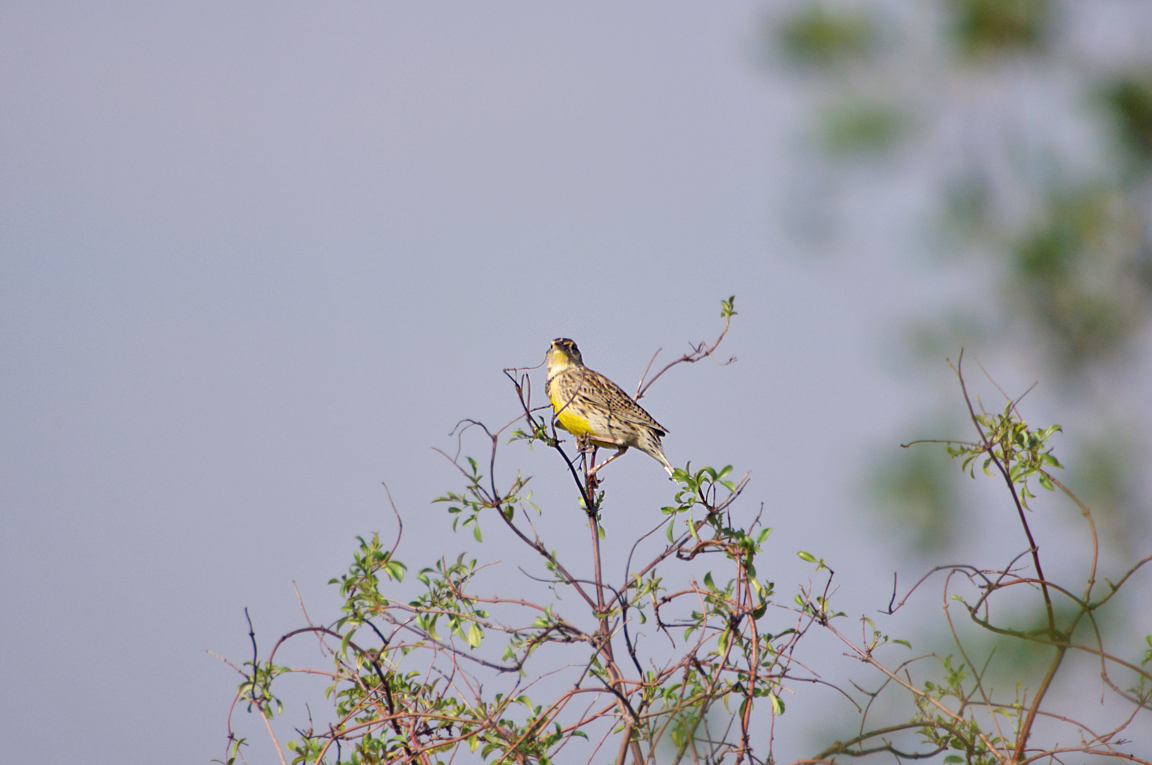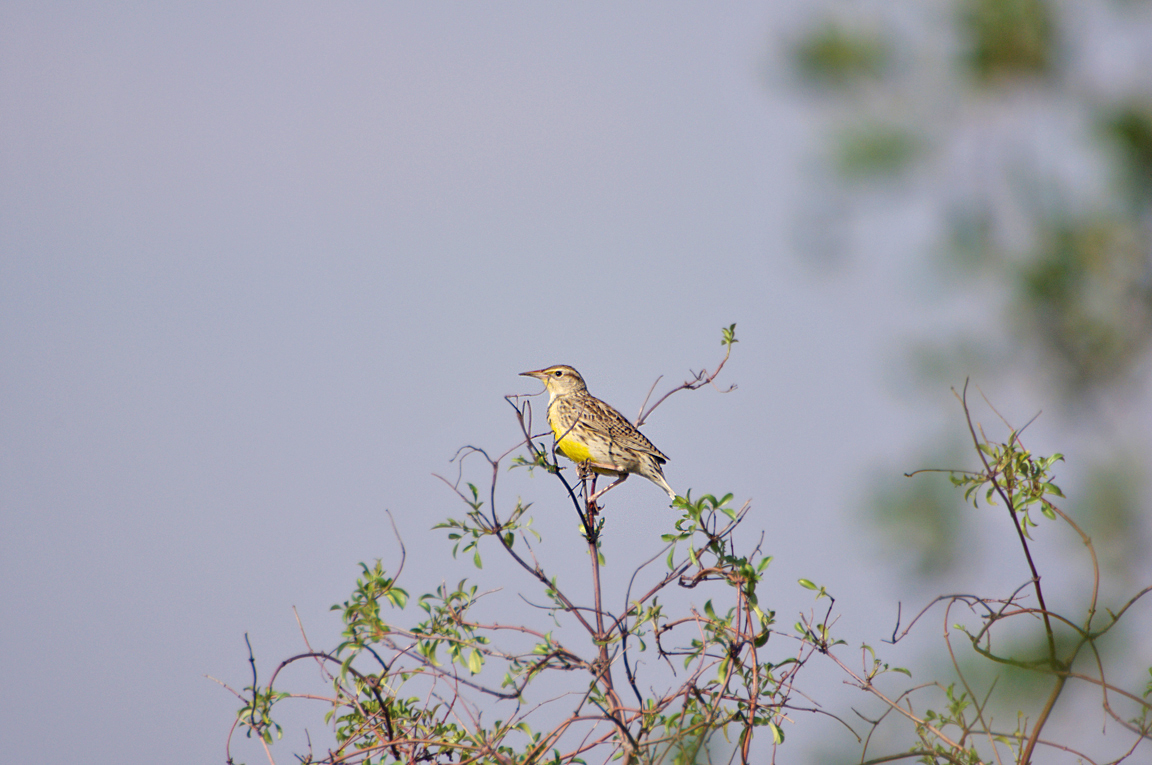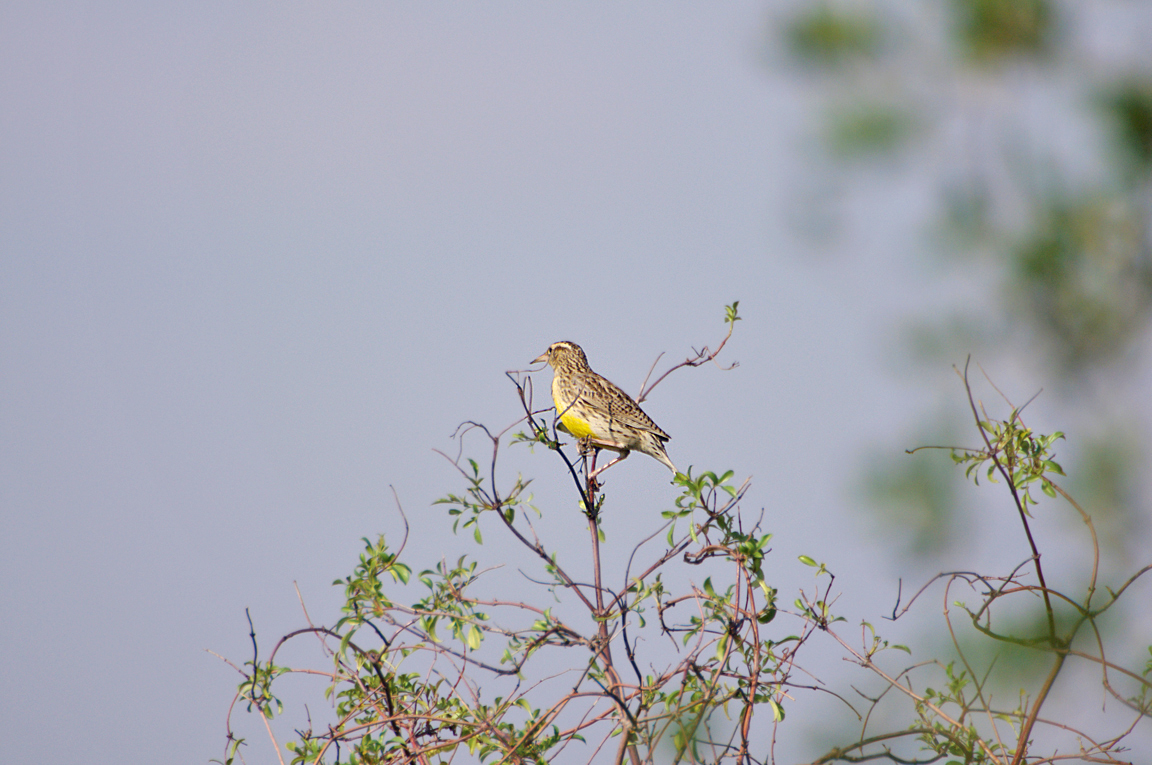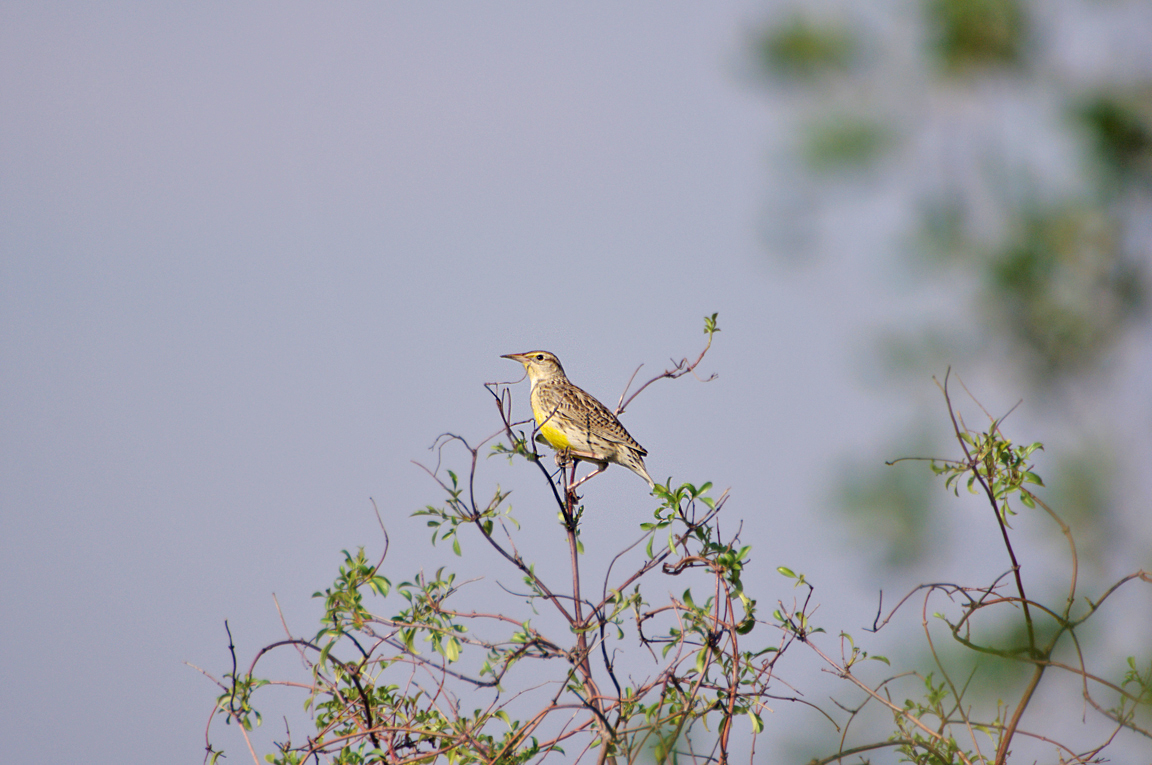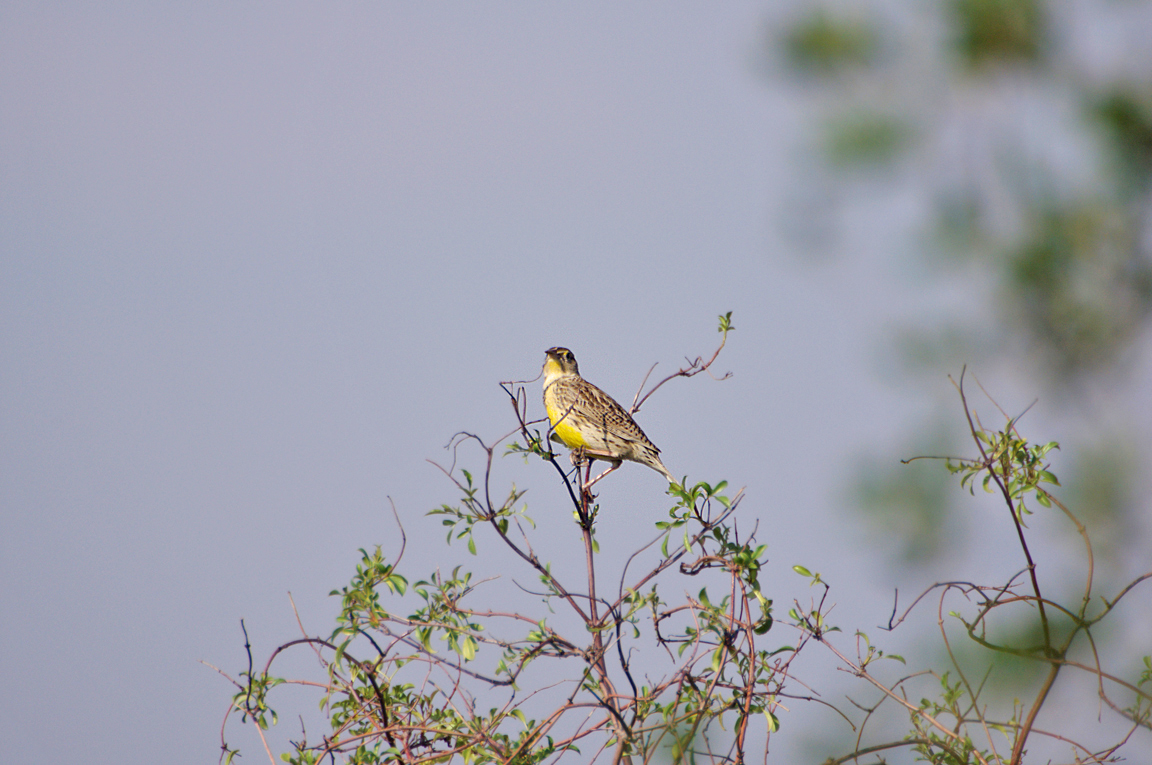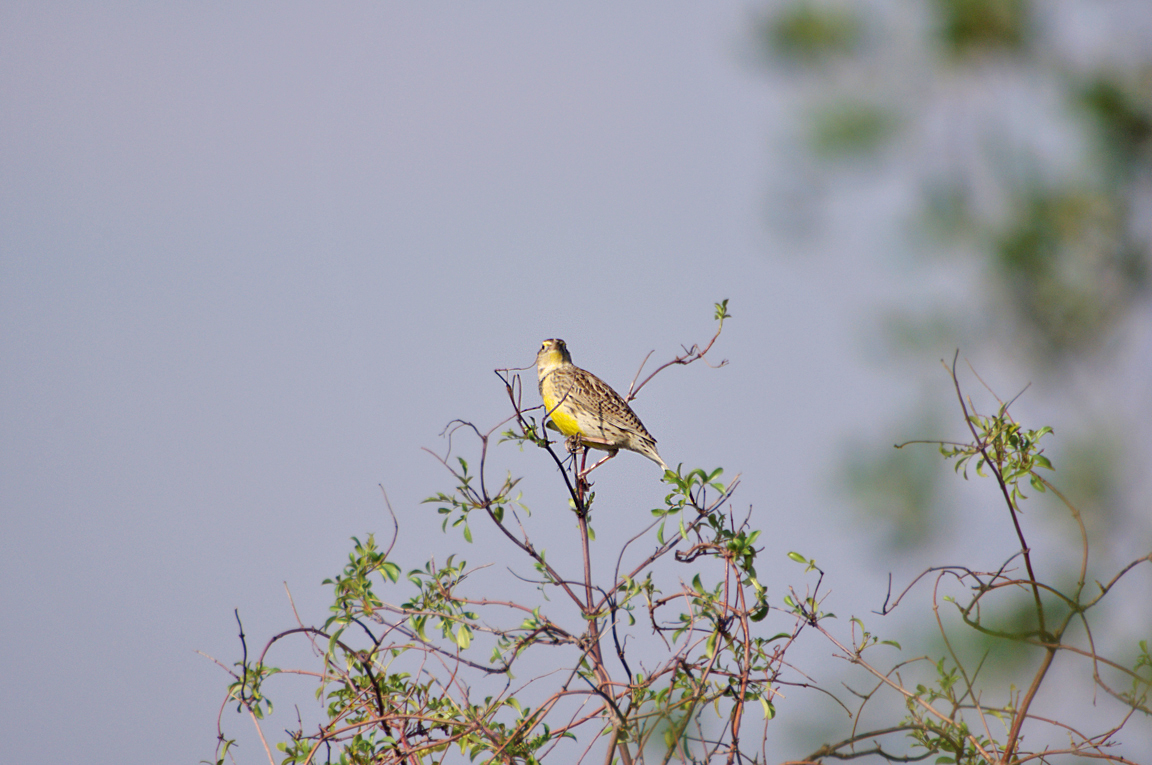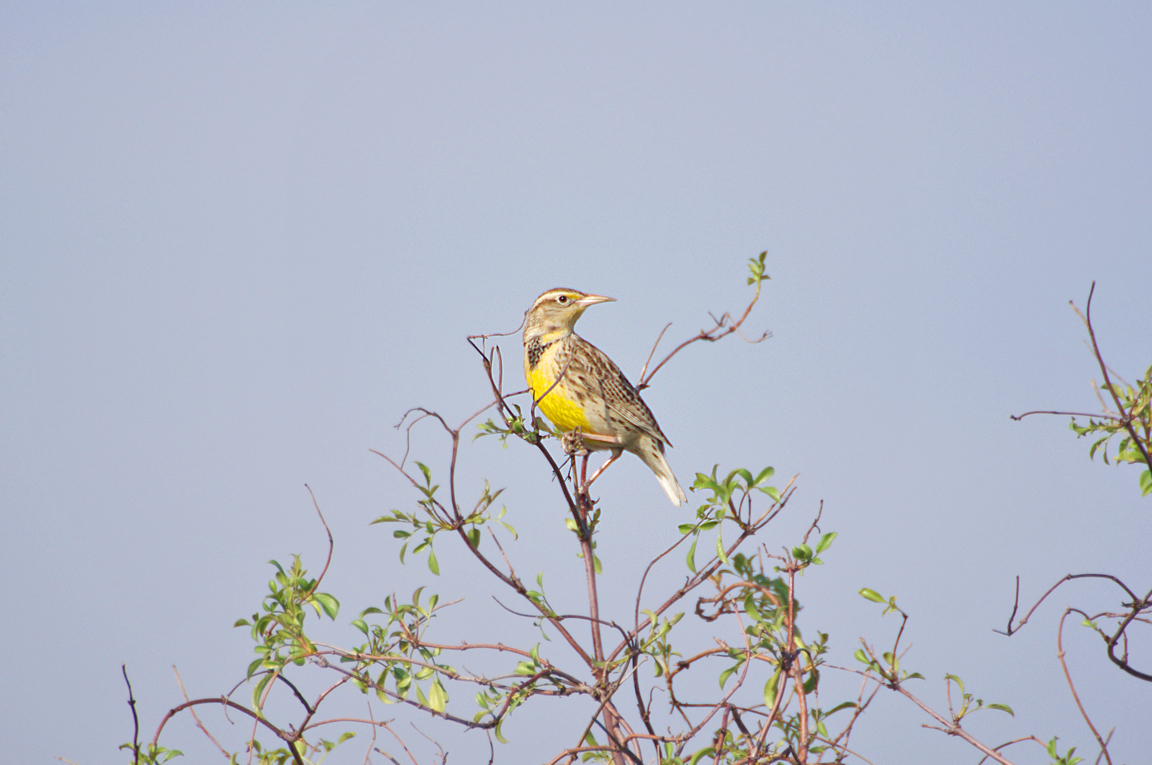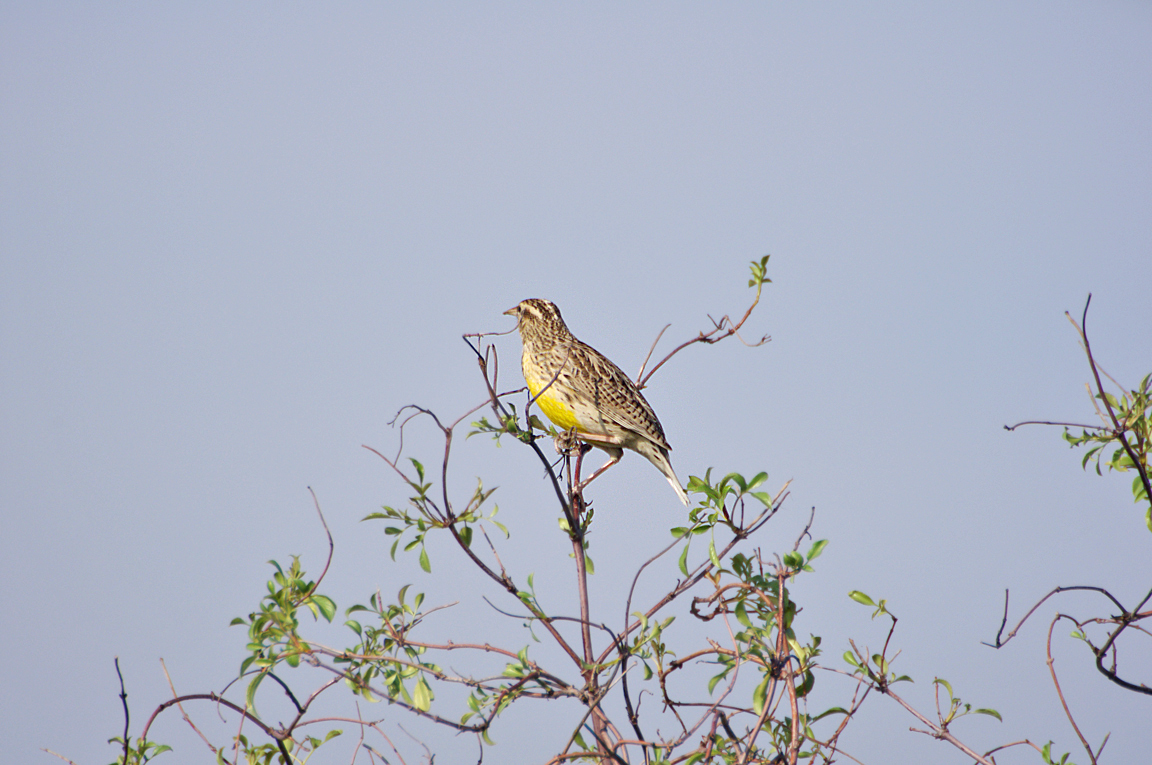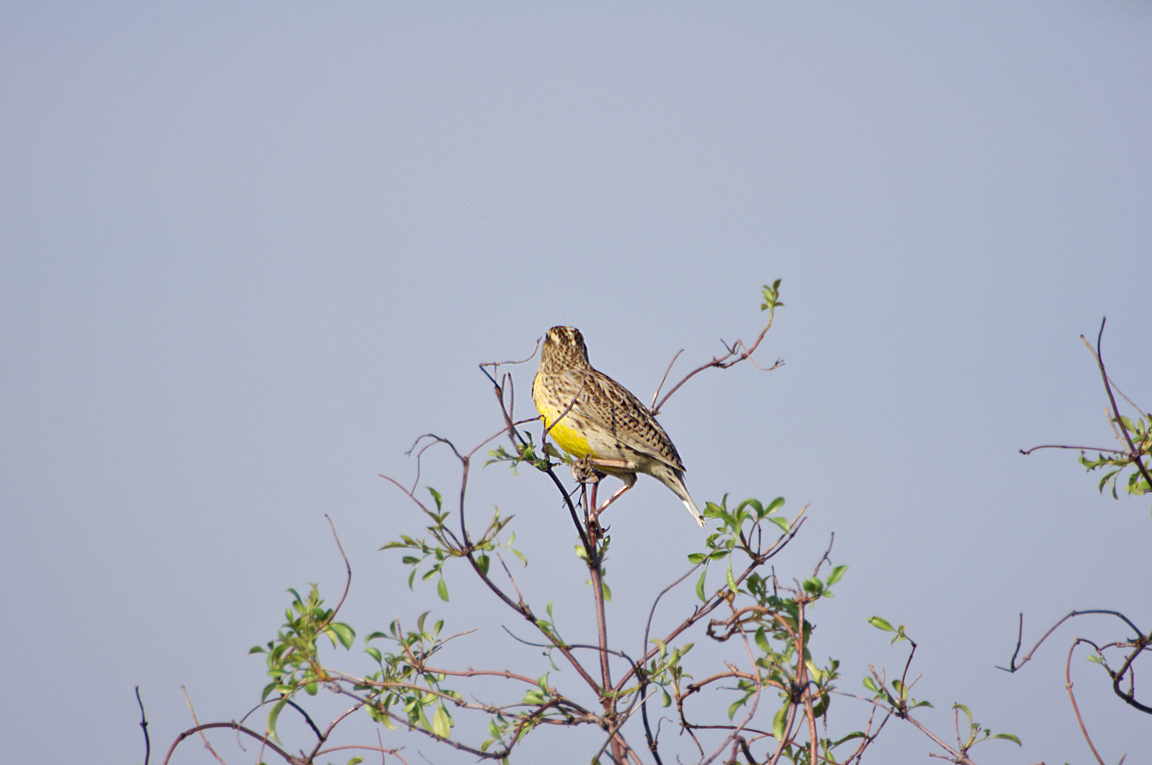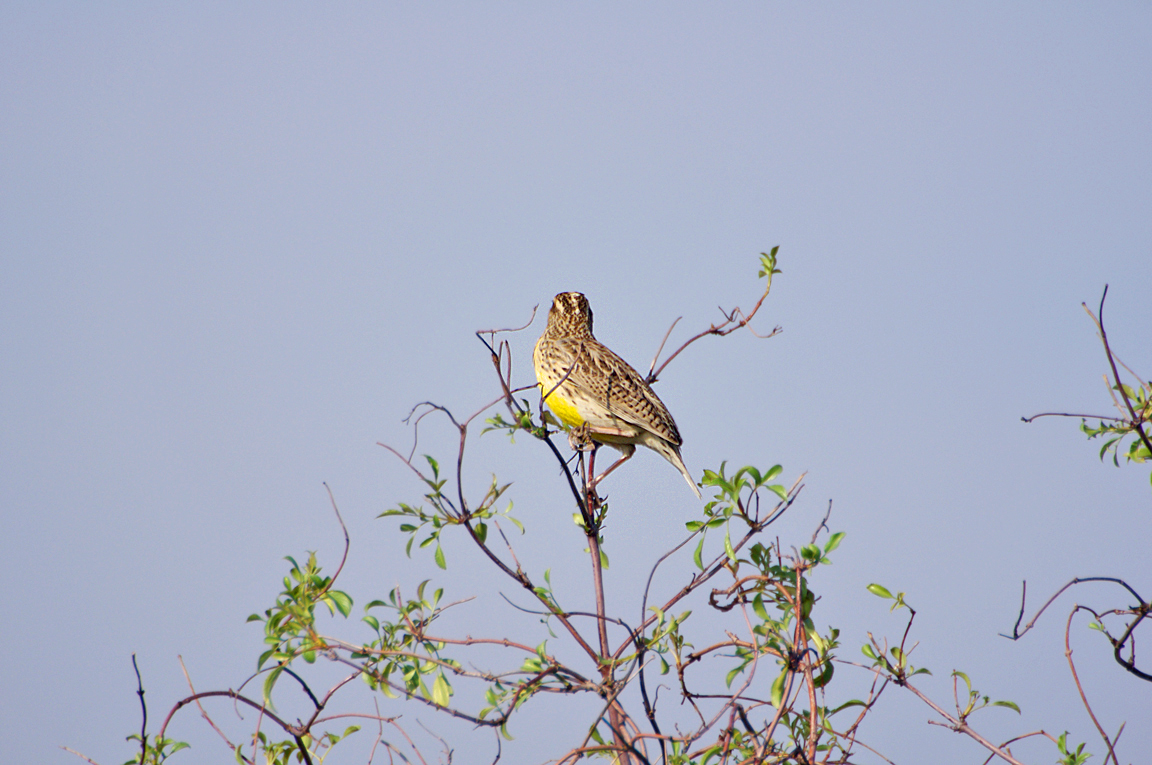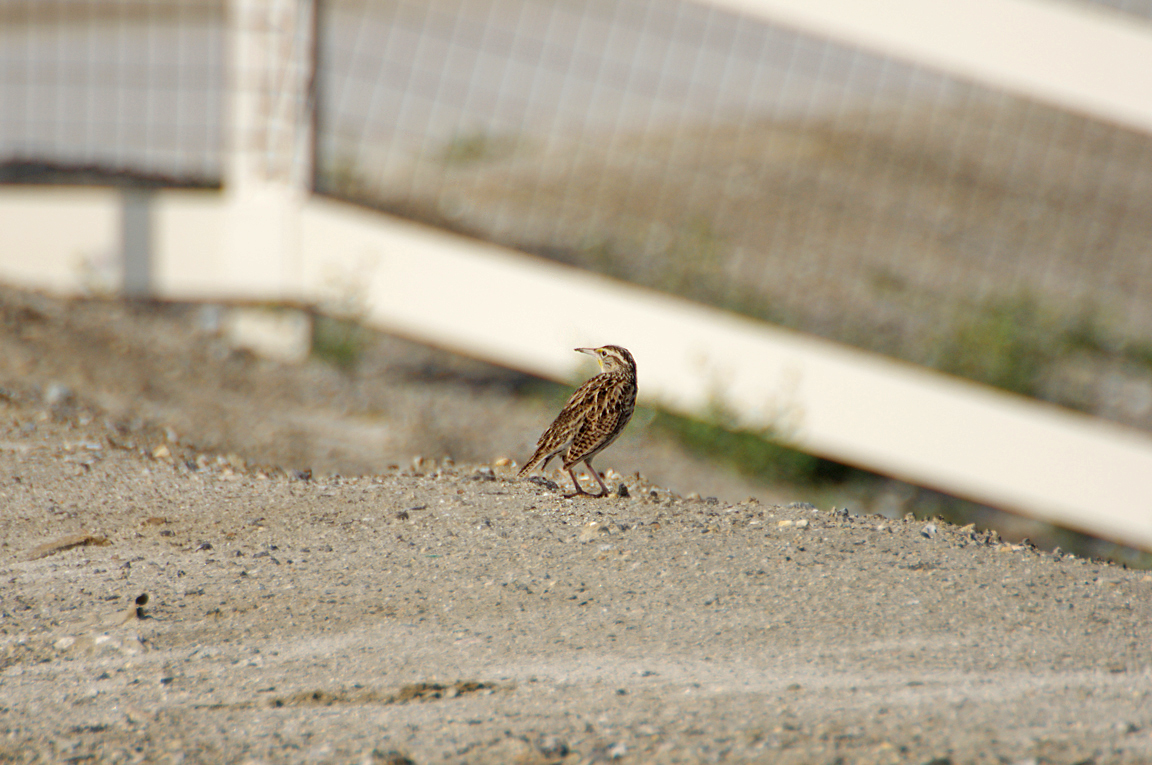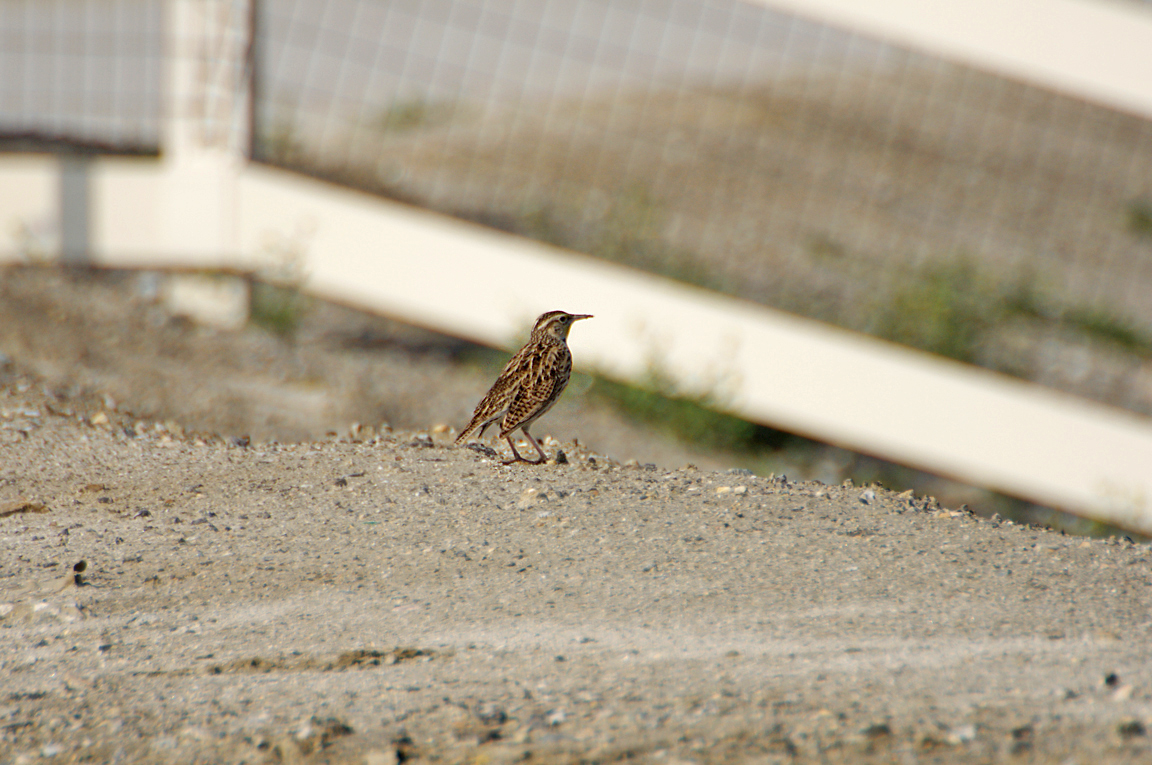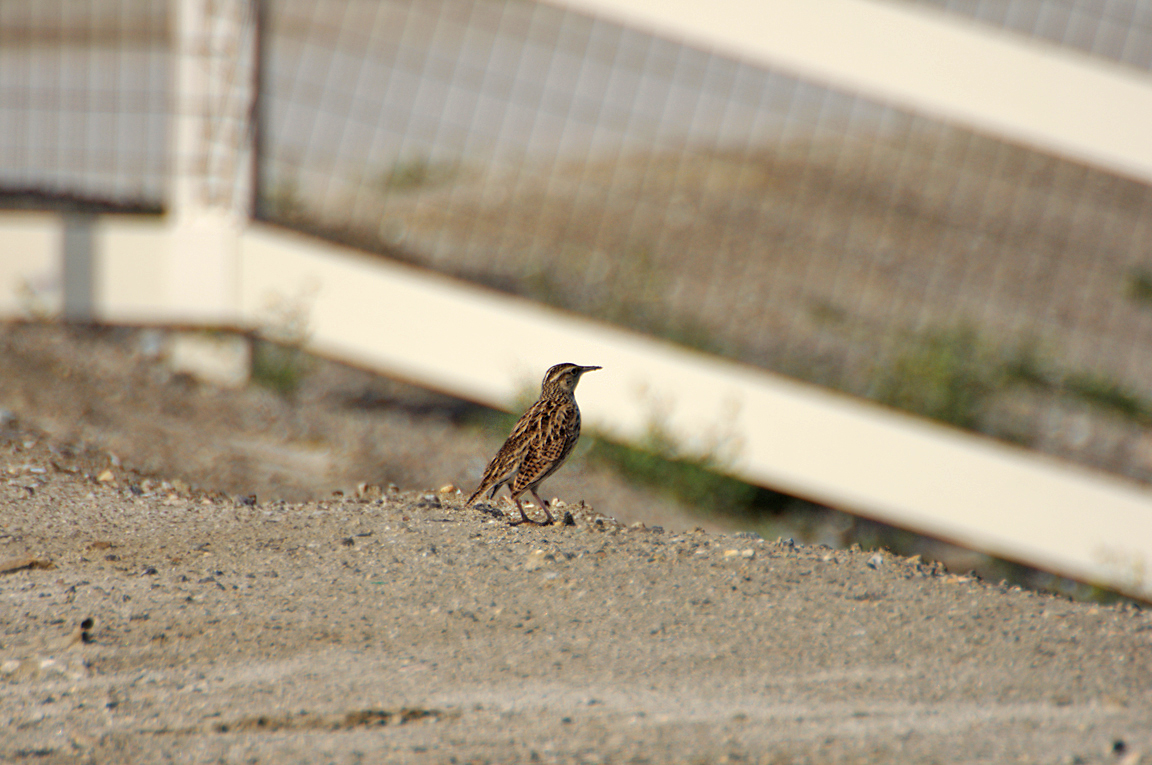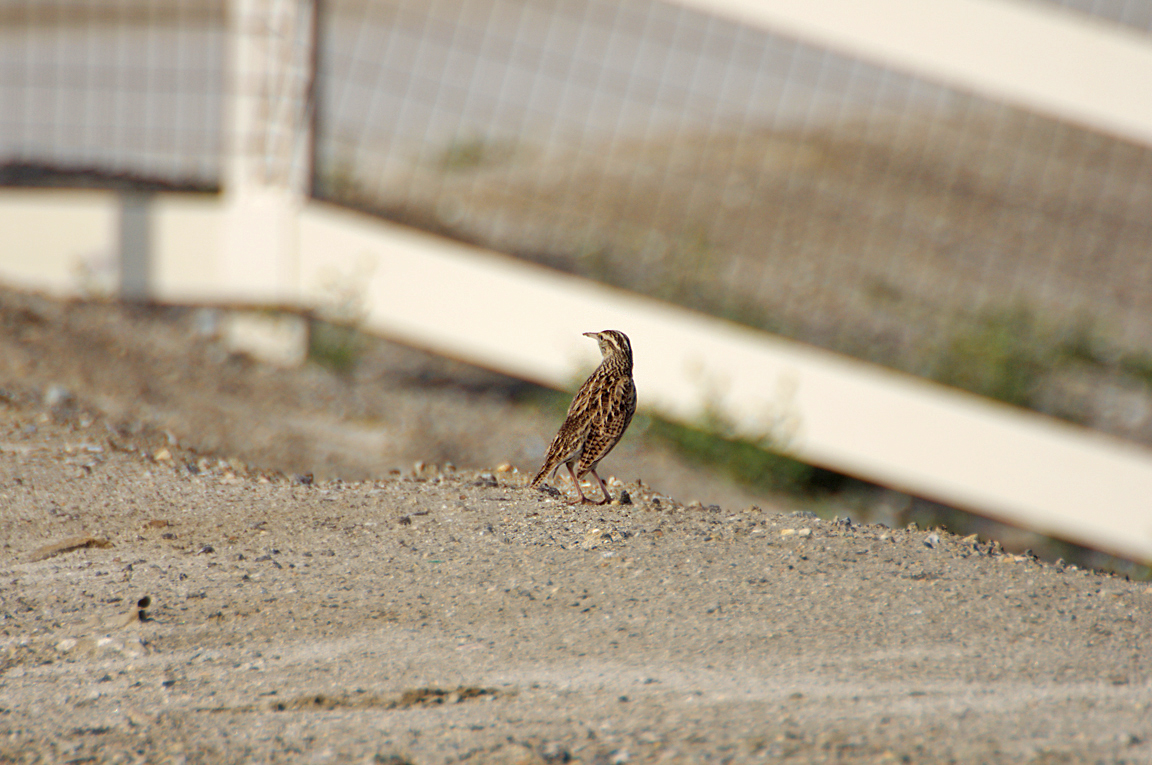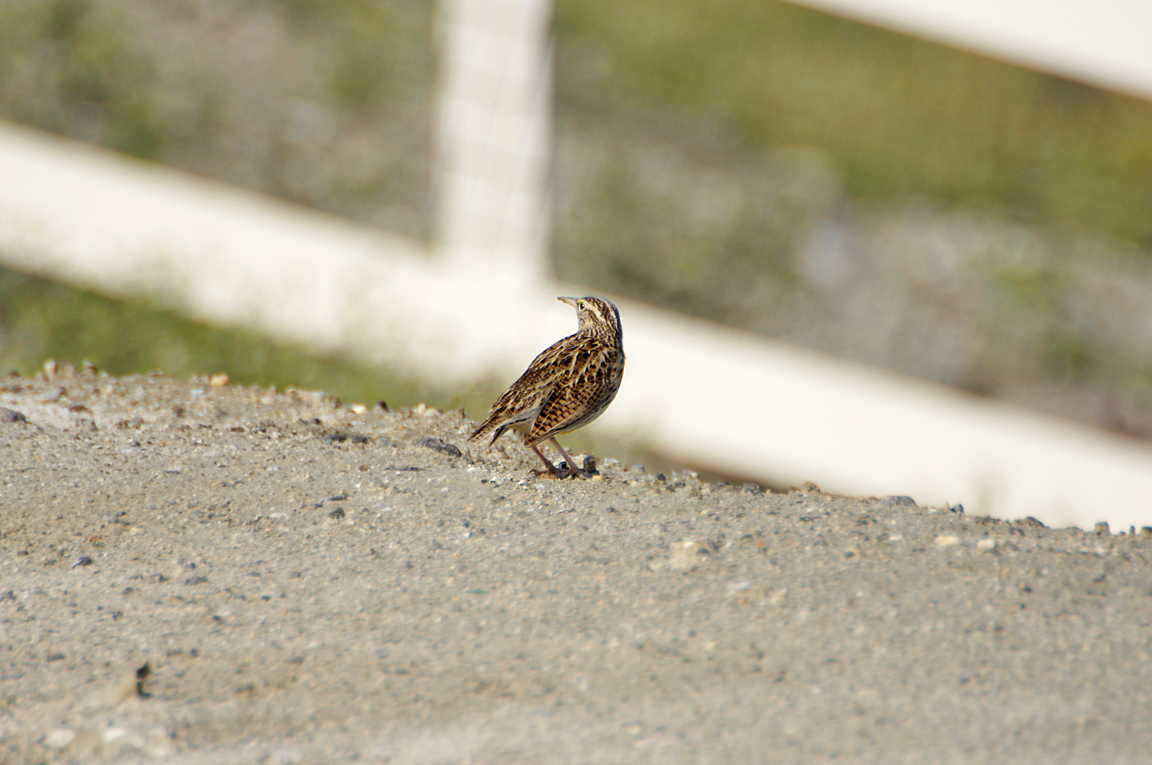|
|
|
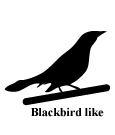 |
Western Meadowlark
|
| Sturnella neglecta | |
An abundant and familiar bird of open country across the western two-thirds of the continent, the Western Meadowlark is beloved for its melodic song. It is frequently seen singing atop fenceposts along roadsides in native grassland and agricultural areas.
Interesting Information
-
The nest of the Western Meadowlark usually is partially covered by a grass roof. It may be completely open, however, or it may have a complete roof and an entrance tunnel several feet long.
-
Although the Western Meadowlark looks nearly identical to the Eastern Meadowlark, the two species hybridize only very rarely. Mixed pairs usually occur only at the edge of the range where few mates are available. Captive breeding experiments found that hybrid meadowlarks were fertile, but produced few eggs that hatched.
-
When Western and Eastern meadowlarks nest in the same area, the Western Meadowlark male will defend his territory against all male meadowlarks of either species.
-
A male Western Meadowlark usually has two mates at the same time. The females do all the incubation and brooding, and most of the feeding of the young.
-
The Western Meadowlark uses a "chase" display during pair formation, with the male chasing the female. The female usually starts the display, and she determines the speed of the chase. If a male has two mates, both females may participate in the display at one time.
Description
Adult Description
-
Large, stocky songbird with a short tail.
-
Throat, chest, and belly yellow.
-
Black "V" across chest.
-
Back brown and streaked.
-
Outer tail feathers white.
-
Length Range: 23-28 cm (9-11 in)
-
Weight: 113 g (4 oz)
-
Size: Medium (9 - 16 in)
Sex Differences
Sexes Similar except females have less yellow on chest and a pailer "V" pattern on the chest.
Immature
Juvenile similar to adult, but with head stripes less sharp, paler overall, and with dusky spots or flecks on chest instead of black V.
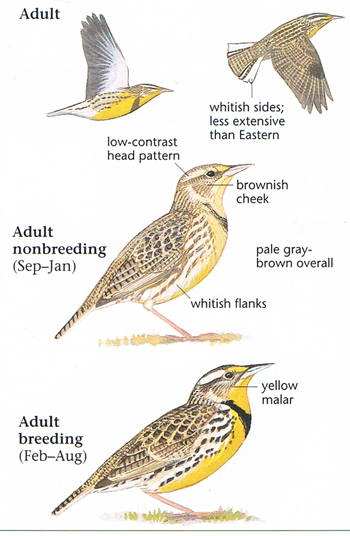
Photo taken from: The Sibley Field Guide by David Allen Sibley
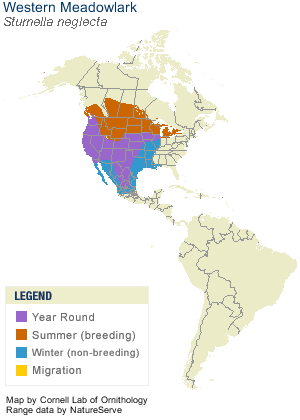
© 2003 Cornell Lab of Ornithology
|
Habitat |
|
Found in open country, including native grasslands, pastures, agricultural fields, roadsides, and desert grassland. |
|
Behavior |
|
Picks food off of ground and probes beneath soil. |
|
Food |
|
Insects, grain, and weed seeds. |
Taxonomy
| Kingdom: | Animalia |
| Phylum: | Chordata |
| Subphylum: | Vertebrata |
| Class: | Aves |
| Order: | Passeriformes |
| Family: | Icteridae |
| Genus: | Sturnella |
| Species: | Sturnella neglecta |
Similar Species |
|
|
Bird Sound |
|
Song a series of rich flutey whistles ending in gurgling whistles. Call a sharp "chupp." |
|
Eggs look like this |
|
Photo taken from: ARCTOS Collaborative Collection Management Solution |
